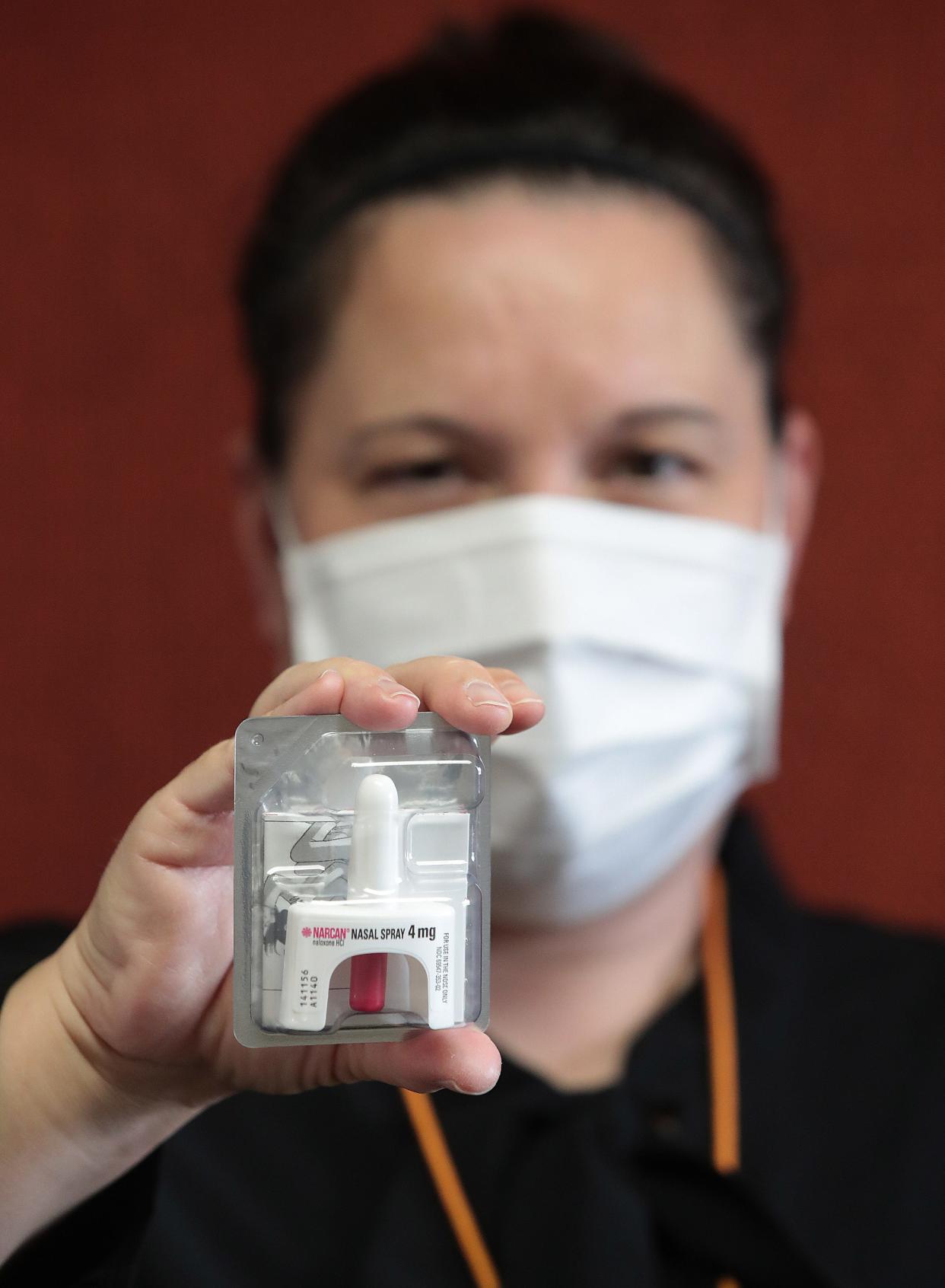As opioid deaths continue, national study brings resources to Stark to learn what saves lives

Ohio has been referred to as ground zero for the opioid epidemic, and no county has been spared the fallout. Stark County and others have spent years combatting the issue with campaigns to reduce stigma, increase access to overdose reversal medicine and encourage paths to recovery.
Report: Health access rising but barriers remain, Stark community health assessment finds
Now, a national study with federal dollars attached is looking into how effective these solutions have been, as well as bringing funding to implement even more, all with the goal of reducing overdoses by 40% over the next three years.
The HEALing Communities Study is part of a more than $350 million National Institutes of Health initiative to research and address the opioid epidemic in the country by testing prevention and treatment models in four states hit particularly hard by the crisis: Ohio, Kentucky, Massachusetts and New York.
There are a wide variety of practices being used to address substance use disorders, including naloxone training, stigma reduction and access to medication-assisted treatment; but James Fye, the Stark community engagement coordinator for the study, said the goal is to dig into what practices actually reduce death and treat addiction and then direct limited resources toward those specifically.
"Do we really know what's effective? Because they've released the overdose deaths from '21 and it was one of the worst years ever," Fye said. "So I don't want to say that what we're doing isn't working, but I think we could do it a little bit more focused and a little bit better."
Suicide prevention:988 suicide prevention hotline is set to launch nationally. Are Ohio and Kentucky ready?
How many overdose deaths were there in 2021?
National Centers for Disease Control data showed 107,622 overdose deaths in 2021, a 15% increase from 2020. Stark County's 2021 data is incomplete, but preliminary numbers show 85 deaths through June of 2021. A total 131 Stark residents died in 2020 from overdoses, and 755 visited the emergency room for overdoses that year.
"People think that this is an issue and a problem in other communities," Fye said. "This is becoming more of an issue and more of a problem in all communities, and I think if I had one goal for 18 months from now, it's that people in Stark County across the board realize that this is a problem for everybody."
The study initially launched in 2019 and will run through December 2023. Stark County is part of the study's second wave of urban areas in Ohio and started July 1. Fye said that the county's mix of urban and rural communities, as well as its position as a hub for nearby areas with fewer resources, makes it an interesting place to study.
In particular, he said, the county has already invested significantly in treatment resources through Stark County Mental Health & Addiction Recovery and public health department initiatives, including the Save Stark resource hub; Project Dawn, which distributes naloxone; and SWAP, the county's needle exchange program.
What this study brings is hundreds of thousands of dollars and three dedicated employees to research addiction, all without dipping into StarkMHAR's or other county budgets.
"Ultimately, their support can help us reduce the rate of overdose deaths in our county by ensuring we have education, services and supports in needed places," said Justina Gorman, coalition and community development coordinator at StarkMHAR. "It takes a village to address substance use issues; HCS can also help grow our village by enhancing our collaborations across sectors and gathering people to work together instead of along side of each other."
Fye is in the process of bringing together a coalition of community stakeholders who will ultimately be in charge of deciding what initiatives to invest in for the study. All community members are invited to join, especially those with experiences with substance use disorder who can provide insight.
"This study's goal from, July 1 to end of December '23 is to reduce opiate related overdoses in Stark County by 40%. That's it. That's the goal," Fye said. "How do we do that? That's the community's decision to do. Yes. Is this as big as you think it is? I think it's even bigger. And I've worked in this community and been a part of this community for coming on 12 years. This is huge."
More: Nonprofit overseeing Ohio's opioid litigation money begins work amid transparency concerns
The HEALing Communities Study and its resources come as Ohio is also gearing up to receive hundreds of millions of dollars in settlement money from three major opioid distributors. Stark County governments could see an estimated $16 million over the next 18 years to fight the ongoing opioid epidemic.
Sam Zern can be reached at szern@cantonrep.com or 330-580-8322. You can also find her on Twitter at @sam_zern.
More details
Resources related to substance use, including locations to receive naloxone or fentanyl test strips, can be found online at savestark-starkcohealthoh.hub.arcgis.com or by calling StarkMHAR at 330-454-4357.
This article originally appeared on The Repository: NIH opioid study aims to reduce overdose by 40% in Ohio

